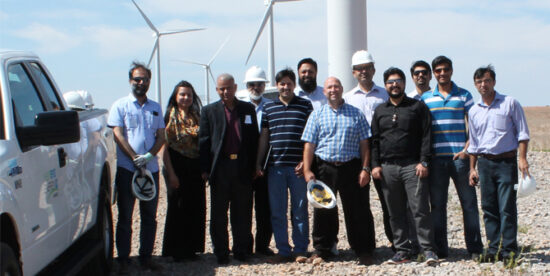
International Exchange Programs, like the International Visitor Leadership Program (IVLP), foster collaboration across borders and sectors to tackle our toughest global challenges. Vicente Manuel López-Ibor Mayor—an Exchange Program Alumni, Chairman of Lightsource Renewable Energy Ltd, (the largest European Solar Company) and Chairman of Via-Circulo Jefferson (an exchange alumni organization in Spain)—offers his perspective on tackling one such challenge: the need to find global solutions to deal with climate change.
According to news reports, the next two years will be the hottest on record. Given the record temperatures already seen this summer, it’s a sobering reminder of a world moving towards irreversible climate change. And in the run-up to this December’s Paris Climate Summit, it has reignited the recurring debate about climate change.
In addition to emission reduction targets, stronger legislation and better technology to tackle climate change, let’s not forget that there is another crucial ingredient in the fight to halt climate change: civil society.
Civil society has been a driving force behind many of the world’s major societal changes, from the abolition of slavery, to the civil rights movement and new milestones reached in workers’ and women’s rights. The climate action movement too, must galvanize the support of the masses if it is to succeed.
The climate action movement… must galvanize the support of the masses if it is to succeed.
The ‘off the grid’ economy can play a vital role in harnessing the latent power of the masses. It can create a new energy ecosystem that is structurally dependent upon clean energy in the same way the centralized grid is dependent upon fossil fuels.
Much of our energy generation is currently centralized and top-down – coming from central power stations and then transmitted to point of consumption at high cost and considerable waste. But, for the first time the rise in renewables offers the exact opposite: decentralized and horizontally distributed energy generation. Furthermore, the proliferation of smart grids and micro-grids (small-scale localized versions of the centralized electricity system) as well as innovative solar storage systems means we can now conceivably have a clean energy infrastructure that is distributed and decentralized; coming from the grassroots rather than the top-down and enabling energy consumers and producers to be one and the same.
A decentralized energy generation model does not mean moving away from existing infrastructure entirely. It is in fact the most efficient way to complement the centralized system by alleviating pressure from an overburdened central grid and helping diversify our long term energy consumption.
Moreover, since distributed energy generation is structurally based on renewables, with little upfront infrastructure requirements as well as becoming increasingly economically competitive, pressing environmental challenges like climate change can finally be addressed and actioned directly by civil society.
Collectively, we can have a transformative impact on the global direction of our energy generation.
In recent months and years, we have seen how some of these changes are beginning to take effect. Renewable energy now has twice the market share of nuclear energy, with solar and wind generation technologies becoming increasingly competitive despite the slump in oil prices. The global market share of gross renewable power generation is estimated to reach 25% by 2018 and according to the IEA, solar generation could account for half of the world’s energy generation by mid-century. Global renewable generation is rising by 45% every year. In North America, this has contributed to the formation of a diffuse energy network based on renewables, allowing communities to generate their energy off the grid but also in parallel with central grids and conventional energy infrastructure via smart grids. And it is here where the immense potential of civil society lies. Collectively, we can have a transformative impact on the global direction of our energy generation.
What’s more, recent major governmental initiatives like the Obama Power Plan that seeks to reduce carbon emissions by almost a third in 15 years could well lead to more smart grids and micro grids to manage the flow of generated renewable energy to where it is most needed. Such grids are already being implemented in some U.S. states and in the military to diversify the energy grid and create a more secure and cleaner power grid. An off the grid energy ecosystem therefore would not just tackle environmental challenges itself, but would also act as the most substantial catalyst for policy makers and energy producers to follow suit and work towards an all clean energy future.
The input of wider civil society and the masses is crucial to the success of the clean energy movement. After all, the latent enterprising power of the people has fostered some of the most remarkable, widespread and long-lasting achievements in human development. And major societal changes have often been advanced by invention, innovation and the markets. Today, it is new technologies, the correct regulatory environment, and the right cultural shifts that will foster the ‘off the grid economy’ and a much-needed mass transition towards clean energies. The civil society movement and the clean energy movement are two sides of the same coin; and the cause of clean energy could well catalyze a new chapter in civil society empowerment. Let’s hope it does, because climate action cannot succeed without it.
By Vicente Manuel López-Ibor Mayor, Chairman, Via-Circulo Jefferson and Chairman, Lightsource Renewable Energy Ltd
